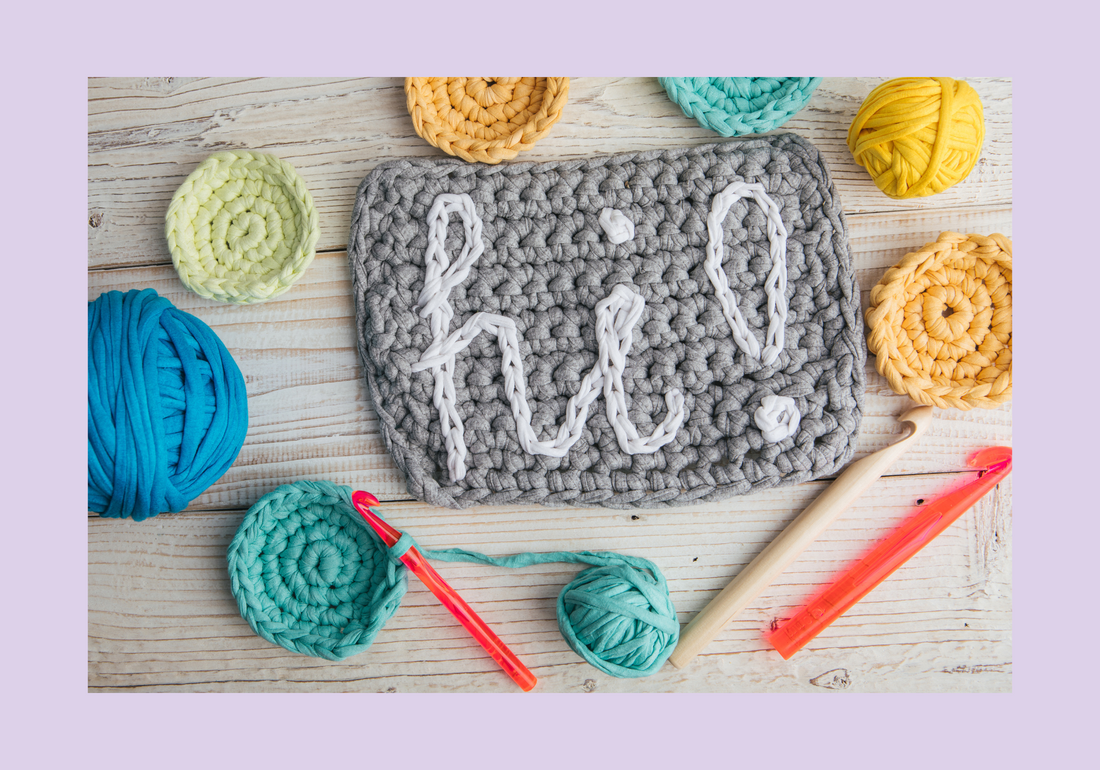Crochet is a versatile craft, capable of creating everything from intricate lace doilies to cozy blankets. But the heart of each project lies in the type of stitch used. While there are literally hundreds of crochet stitches, each with its own unique texture and pattern, a handful of them are the go-to choices for most projects.
Let's explore the types of crochet stitches and dive into the most commonly used ones.
Single Crochet (sc)
The single crochet is often the first stitch that beginners learn. It creates a fabric that is tight and firm, making it an ideal choice for projects requiring a solid structure, such as dishcloths and potholders. The dense nature of this stitch also means it holds shape well, making it popular for amigurumi (crocheted stuffed toys), like the dolls we make at Crochetree. With just a yarn over and a pull-through, this stitch is as simple as it is versatile.
Double Crochet (dc)
If you're looking for a stitch that offers both height and a softer texture, the double crochet is your go-to option. With its longer loops and open structure, it lends itself well to a variety of projects, including blankets, shawls, and even clothing items. The double crochet works up faster than shorter stitches, so it's a popular choice for larger projects where speed and coverage are key.
Half Double Crochet (hdc)
The half double crochet offers the best of both worlds—a blend of the tightness of single crochet and the flexibility of double crochet. The stitch creates a fabric that has a bit more give and drape than single crochet, yet retains a degree of firmness. It's a popular stitch for clothing items like beanies and scarves where you want a comfortable fit without being too rigid or too loose.
Treble Crochet (tr or tc)
Treble crochet is known for its height and airy texture. Its elongated structure creates a fabric that drapes beautifully, making it ideal for projects requiring a delicate touch, such as lacy shawls, lightweight scarves, and elegant baby clothes. The stitch's height also makes it a good choice for projects that need to be completed more quickly.
Slip Stitch (sl st)
The slip stitch serves a unique role in crochet projects. While not typically used to create fabric, it is essential for shaping and joining. This stitch is often employed to close rounds in a seamless manner or to move yarn across a row without adding height. It can also be used in surface crochet to create decorative lines and details, adding a finishing touch to your work.
Cluster Stitches (cl)
Cluster stitches are all about adding texture and visual interest. They involve working multiple incomplete stitches into a single base stitch and then finishing them together. The resulting "cluster" creates a raised, textured effect that can make patterns like flowers or geometric designs pop. Cluster stitches are commonly seen in intricate afghans and decorative edgings.
Shell Stitches
Shell stitches bring a touch of elegance and flair to any project. Consisting of a set of double crochets (or taller stitches) worked into the same space, they create a fan-like shape that gives a lacy, decorative feel. These are especially popular in projects that require a lovely, ornate border, or in items like doilies and summer shawls.
Bobble Stitch
The bobble stitch is a playful and eye-catching addition to any crochet project. It's made by partially completing multiple double crochets in the same stitch and then joining them together, much like a cluster stitch. The key difference is that the bobble pops out on the opposite side of the fabric, creating a 3D effect. This makes it perfect for tactile items like baby blankets, cushions, or any project that could benefit from a touch of whimsy.
In conclusion, the world of crochet stitches is rich and varied. While this is not an exhaustive list, these are some of the most commonly used stitches that form the foundation of many crochet projects. Whether you're new to crochet or a seasoned pro, mastering these stitches will equip you with the tools you need to tackle almost any project.
Happy crocheting!















